SOUTHEAST OHIO ASTRONOMICAL SOCIETY

Comet PanSTARRS
Any Clear Night
7:30 - 8:40 PM
Now is the time to see Comet Pan-STARRS as it travels out of the inner solar system. Our friends over at SpaceWeather are posting daily maps on the Comet’s location, as well as some cool astro pics that folks are taking. Next clear night, check it out for yourself!
UPDATE: March 19 from Travis Milliken:
“Mar 19: Happy, mega-blessed Spring just about here. Finally, a clear sunset/night in Athens. Hunted and found the peterPAN comet @8:40pm from the road near the water tower on the Ridges (az=290+deg). S/he’s a sweet 1.7 degrees in my 6deg FOV, 9.5x40 binocs. (You’ll need same or > to spot it). Nice little fan shape w/tail pointing to zenith (tail was x5 the head). Altitude was ,<7deg and dropped rapidly (I had a line of trees on the west horizon but could see the upper 1/4 of a blinking tower).”
National Astronomy Day
We are happy to announce that we will be celebrating National Moon Astronomy Day at KidsFest at the Convo Center on Ohio University’s campus from 10 AM to 2 PM with our specially equipped solar telescopes showing children from all over Athens County and surrounding areas sunspots and solar prominences!
This event is open to the public. This event is weather dependent - rain/clouds cancels.
Open Telescope Night
We will make a return visit to the Lamping Homestead Campground, which is part of the Wayne National Forest, for an Open Telescope Night from 9 - 10:30 PM on Friday, June 7. We will have several telescopes and binoculars looking at Saturn, and some beautiful deep-sky objects. This event is part of the Play Outside Weekend programming put on by the Wayne National Forest.
The Lamping Homestead Campground has the darkest skies in the state of Ohio. We fully support their efforts in creating a “Dark Sky Park” and look forward to our next program there. It is definitely worth the trip!
The Lamping Homestead Campground is located on S.R. 537, 2 miles from S.R. 26 (approximatedly 35 miles from Marietta). GPS Lat/Long coordinates for the area are 39 deg 37’ 32" / 81 deg 11’ 16".
Athens Clear Sky Chart
The Athens Clear Sky Chart is an astronomers forecast. It shows at a glance when, in the next 48 hours, we might expect clear and dark skies for Athens, Ohio. It’s is specifically intended for amateur astronomers.
About Southeast Ohio Astronomical Society

About Us
The Southeast Ohio Astronomical Society is an organization in located in Athens, Ohio, that brings astronomy to the people.
We are a group of amateur and professional astronomers. Members range in age from high schoolers to senior citizens. The level of knowledge of our members has a similar range - beginners to published professionals.
We hold monthly Open Telescope Nights at various locations throughout the community. The group also provides special telescopes for Safe Solar Viewing 4 times a year. We give special presentations at local libraries and high schools. Group members reach out to hundreds of local school children through classroom presentations during the year. Most activities are free and open to the public.
Our History
The Southeast Ohio Astronomical Society was founded in 1999 in Athens, Ohio, by a small group of local citizens concerned about the growing light pollution problem in Athens.
Our Mission
The mission of the Southeast Ohio Astronomical Society is to share the wonder of astronomy with the people of southeast Ohio and surrounding areas: to encourage these individuals to take their own trip of scientific discovery; and to provide educational opportunities to those interested in increasing their knowledge of astronomy and related sbjects.
Photos
A picture is worth a thousand words. Click through our photo gallery and get to know us.
Meet some of our members…
Maryann Hartwick

Maryann Hartwick became interested in astronomy while living in Stamford, NY, under some very dark skies. She looked up one clear night and saw the Milky Way for the first time. She’s been hooked on astronomy ever since!
Maryann enjoys looking through telescopes, and planning the next public event. She can also be found helping folks out with their tax returns, accompanying music students on the piano, playing the French Horn in local community bands, or doing some community work with the Kiwanis Club of Downtown Athens.
Maryann was one of the founding members of the Southeast Ohio Astronomical Society. She is currently the President and webmaster for the group.
George Eberts
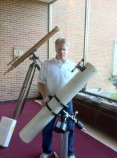
I was born & raised on the west side of Columbus. I got my first telescope and astronomy books for Christmas around age seven or eight. With it I observed the moon, Jupiter, and Saturn; without it I remember watching moon phases, the Pleiades, and the Big Dipper’s nightly and seasonal movements from my front yard. My cousin Tom had the same interest and we shared our observations with each other in letters, and observed together when he visited. Eventually I obtained 7X50 binoculars, a 60mm Unitron refractor, and a subscription to Sky And Telescope magazine and started tracking down Messier objects, Uranus & Neptune, and asteroids. I remember Comets Bennet (1970) and Kahoutec (1974) as seen from the countryside near Columbus.
When I moved to Athens in 1978 I wanted to find other local amateur astronomers and use whatever telescopes might be available through Ohio University so I started up a “Communiversity” Stargazing class. When I approached the O.U. Department of Physics & Astronomy to use telescopes, they were immediately generous and granted me access to the Fecker 10” refractor and Criterion 12.5” reflector scopes, asking that in return I host “open telescope nights” for students in the daytime physics classes. That evolved into the Physical Science 140 “Observational Astronomy” class that I still teach today. I guess I function as the liaison between OU and SEOAS, and my job is to make sure that OU telescopes are available for public outreach via public viewing nights, school visits, etc… I still love “deep sky” objects the best and have tracked down & observed all Messier objects and hundreds of other nebulae, galaxies, and star clusters.
Webmaster’s Note: George was one of the founding members of the group. He is currently the Vice-president. Fun fact: At our 2000 Messier Marathon, George competed head-to-head against a ‘goto’ telescope and won.
Tom O’Grady

I went on a four month camping trip in Europe and North Africa with George Eberts in the early 1970’s. Bit by bit more of the night sky was revealed by George. A long, cold, and exceptionally clear, autumn evening in a pasture field just outside of Zermatt, Switzerland got my undivided attention. The best and brightest stars from a high mountain pasture seemed as though they could be scooped up by the handful. Two nights later George and I found ourselves walking down out of the Alps through the Simplon Pass toward the Italian border. We walked all night. The sky was clear as a bell. With George as my tour guide to the constellations on this long night walk I became familiar with the autumn, winter and most of the spring sky by dawn. A few weeks later we were in Morocco, headed for Marrakesh. Each afternoon we found ourselves seeking out a bottle of wine, a loaf of bread and a high point to observe the sunset. That autumn Venus, Jupiter, Mars and Saturn were all visible in the fading twilight. Each evening we watched and tried to find the planets earlier than the evening before. Eventually we were spotting Venus in a blue sky while the sun was still above the horizon. After a few days repeating that feat we finally spotted Jupiter before sunset. Since then there has been no looking back. Only looking up. Later that year we saw Comet Kohoutek through George’s small telescope.
This early introduction has led George and I on a number of expeditions, most especially in pursuit of the Moon’s shadow. We observed our first total eclipse of the sun in Columbia, South America in 1977. That inspired a February mission in 1979 to the middle of Manitoba, Canada for another. Two nights of aurorae spiced up that excursion. We have since journeyed to Assateaque Island on the east coast, the west coast of Mexico, the shores of Lake Erie, a peninsula reaching up into the Carribean Sea from the north coast of Venezuela, and to the Egypt-Libyan border for the purpose of basking in the Moon’s umbral shadow. A side venture in 1986 took us to the Florida Keys for a dark sky look at Comet Halley. It has been nothing but fun and excitement along the way. A half dozen comets, lunar eclipses, annual star parties in dark places, and the occasional long night standing around the base of a telescope gawking into the depths of space and talking about some of the best things we’ve ever talked about has become a matter of course. It’s all George’s fault.
Webmaster’s Note: Tom was one of the founding members of the group. He is currently a member of the Board of Trustees of our group.
Steve Bush

Steve Bush is one of the founding members of the group. He is an avid meteorite collector and has an eclectic assortment of old (and outdated) astronomy information which is a ‘trip through the history of astronomy’ to look through. Steve has the best solar telescope within the region and is always happy to bring it out for our various Safe Solar Telescope shows. Steve is a local businessman by day (Davidson-Bush, Inc.) who specializes in boilers. Steve is our Secretary of our group.
Kathleen and Wes Covalt

When Wes and Kathleen Covalt relocated to the dark skies of Athens, Ohio, the stars called out their celestial greeting. Learning about heavenly wonders from fellow SEOAS members, Wes & Kathleen enjoy sharing their new found cosmic awareness.
During the day, Wes works from home as a statistician and computer programmer for an international marketing research firm. Also from their home, Kathleen helps her clients explore inner mysteries as a spiritual healer and intuitive counselor.
Together, Wes & Kathleen parent three Miniature Cheviot sheep that teach them much about the ways of the land.
Travis Milliken
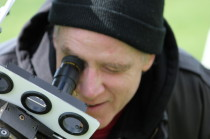
Travis is one of the founding members of the group. His love of astronomy shines through at all of our events. He has traveled the world always looking up where ever he goes. He built a Sun Funnel and has enjoyed taking it out to our Safe Solar Viewing Shows, as well as to local festivals. Travis is a member of the Board of Trustees of our group.
Phil Armstrong

Phil Armstrong teaches science at Athens High School. He teaches physics and astronomy to 9th graders and chemistry to 11th and 12th graders. Phil has lived here for 20 years, having immigrated from Manchester, England (which explains the cool accent).
When asked how he first became interested in astronomy, Phil says…
Since I can remember I’ve been interested in science but I remember when I was 10, I swapped a GI Joe for a sawn in half pair of WWII German 8x30 binoculars (so really a monocular). It was through these that I first looked at the Moon and was astounded to actually see craters! That hooked me and I soon got a 60mm refractor for my birthday.
His hobbies include scuba diving, astronomy, Indian cooking, flying tiny RC helicopters and playing guitar.
ASTRO LINKS - these are some of our favorite astronomy-related websites.
Andy’s Shot Glass
The Andy’s Shot Glass website is a great place for video tutorials on all kinds of astro gear. Their tag line is “astronomy and astrophotography for non-gazillioinaires”.
Astronomers Without Borders
Astronomers Without Borders is a global organization that promotes “sharing the sky”. The Southeast Ohio Astronomical Society is a proud member.
Astronomical Society of the Pacific
Check out the new website for the Astronomical Society of the Pacific. They are a great resource for “connecting people to science by advancing science literacy through astronomy”.
Astronomy.com
Astronomy.com is the official website for Astronomy Magazine.
Astronomy for Kids
Astronomy for Kids is a site developed by club member Paul Grim that contains educational videos that he created to teach astronomy to children. These videos are a great way to start learning about astronomy for children of all ages. These videos have aired on Athens Community Television.
Astronomy Picture of the Day
APOD - the official website of the Astronomy Picture of the Day which provides a daily image or photograph of our fascinating universe, along with a brief explanation written by a professional astronomer.
China National Space Administration
CNSA - the official website for the China National Space Administration.
European Space Agency
ESA - the officail website for the European Space Agency.
Getting Started in Astronomy
Getting Started in Astronomy - The Absolute Basics was developed by club member Paul Grim. It is a wonderful primer on astronomy basics.
Heavens-Above.com
Heavens-Above.com gives accurate predictions of flyovers for any location in the world. Don’t miss that next Iridium flare or International Space Station flyover. This website gives you the info you need a full week ahead of the event.
International Dark-Sky Association
IDAHome - is the official website of the International Dark-Sky Association. This is a great place to find useful information and links about outdoor lighting and outdoor lighting ordinances.
Japan Aerospace Exploration Agency
JAXA - the official website of the Japan Aerospace Exploration Agency.
NASA
NASA - the official website for the National Aeronautics and Space Administration.
Night Sky Network
The Night Sky Network is a website which list activities for astronomy clubs from all over the country. The Southeast Ohio Astronomical Society is a proud member.
Roscosmos
Russian Federal Space Agency
Roscosmos - the official website for the Russian Federal Space Agency.
SkyandTelescope.com
SkyandTelescope.com is the official website for Sky and Telescope Magazine.
Skymaps.com
Skymaps.com offers free monthly sky maps to help you explore, learn and enjoy the night sky!
Spaceweather.com
Spaceweather.com is a website devoted to news and information about the Sun-Earth environment. This is a great place to check for current sunspots and auroras.
CURRENT MOON
moon phase
Astronomy Picture of the Day
The Sun Now
Images from SOHO
NASA Image of the Day
Astronomy Radio Shows

Are We Alone?

Join Dr. Seth Shostak from the SETI Institute as he asks that all important question, “Are We Alone?” We were happy to have Seth as a guest on Live From Studio B when he was visiting Athens.

Converstations from Studio B - Astronomy

Join George Eberts, Maryann Hartwick and Tom O’Grady as they talk astronomy on their monthly radio show by tuning into Conversations from Studio B on WOUB.org. They are happy to announce that Bob Eichenberg will be joining the show!

Naked Astronomy
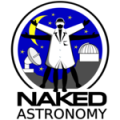
Naked Astronomy is a monthly radio show that “brings the Universe to your ears”.

Space Weather Radio

You can actaully hear the radar echoes of satellites and meteors using radio! Listen to Space Weather Radio.

StarDate Online

StarDate is a daily radio program brought to you by the University of Texas McDonald Observatory.
Awards
Friend of the Stars Awards
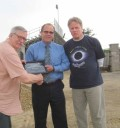
We have been presenting our “Friend of the Stars Award” since 2000 in recognition of local individuals and businesses that utilize outdoor lighting that does not contribute to the light pollution problem. Pictured at left is Paul Grim, Principal Mike Meek, and George Eberts at the Athens High School Football Field.
- 2000 - Taylor Team of Dealerships
- 2001 - Athens Community Center
- 2002 - O’Bleness Memorial Hospital
- 2003 - Wal-Mart
- 2004 - Athens City Council for Outdoor Lighting Ordinance
- 2005 - Dr. Joseph Shields
- 2006 - Abrio’s Brick Oven Pizza and the Village Bakery
- 2007 - Appalachian Behavioral Healthcare - Athens Campus
- 2008 - City of Athens Wastewater Treatment Plant
- 2009 - no nominations received - no award given
- 2010 - no nominations received - no award given
- 2011 - Athens High School Footbsll Field Renovation Project and the Eclipse Company Town General Store
- 2012 - no award given - Nominations were received, but each nominee had problem areas with their outdoor lighting. Lights that are directed upward, or un shielded lights prevent nominees from receiving this award.
SEOAS ASTRONOMY AWARDS
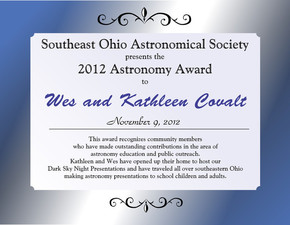
2012 - Wes and Kathleen Covalt
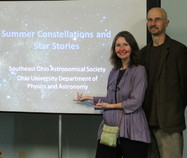
The Southeast Ohio Astronomical Society presented this special award - the 2012 Astronomy Award - to Wes and Kathleen Covalt. This award recognizes club members who have made outstanding contributions in the area of astronomy education and public outreach during the year. Kathleen and Wes were the driving force behind our successful series of Dark Sky Nights. They graciously allowed us to use their home for the first ones. They have traveled all over southeastern Ohio making astronomy presentations to school children and adults. They exemplify our mission of “bringing astronomy to the people”.
Congratulations Wes and Kathleen!
2007 - Paul Grim

The Southeast Ohio Astronomical Society presented this special award - the 2007 Astronomy Award - to Mr. Paul Grim. This award is for the community member who has contributed the most in the area of astronomy education and public outreach. Paul has spoken to literally hundreds of area children about astronomy during the past year. He can frequently be seen at Open Telescope Nights guiding viewers through the wonders of our solar system.
Paul grew up in Washington, D.C. He attended Johns Hopkins University where he received a BA in Geology. His graduate studies at Columbis University resulted in an MA in Geology. Most of his professional career was with the National Oceanic and Atmospheric Administration (NOAA). Paul retired from NOAA (Silver Springs, MD) in 1998 and several years later moved to Athens with his wife, Muriel, where his main interest has been in amateur astronomy. Paul served as web master for this group for many years. Thanks for all of your hard work, Paul!
For Sale:
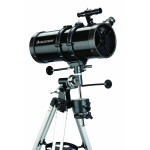
Celestron Powerseeker 127eq 50 mm Newtonian Reflector
20mm and 4mm eyepieces, 3x Barlow lens
German Equatorial Mount
Tripod
Lunar Filter
Accessory Tray
Also included: Large Carrying Bag, Compass, Star Map, Original Papers.
MEMBERSHIP
Membership is open to anyone with an interest in astronomy.
There is no age requirement.
There is no degree requirement.
You don’t need to own a telescope.
You don’t need to have any prior knowledge of astronomy.
Lectures are open to the public. Open Telescope Nights and Safe Solar Viewings are open to the public.
There are no dues.
To become a member, send us an e-mail at athensastronomy@gmail.com. It’s that simple.
Hope to see you at our next event!
Messier Marathon
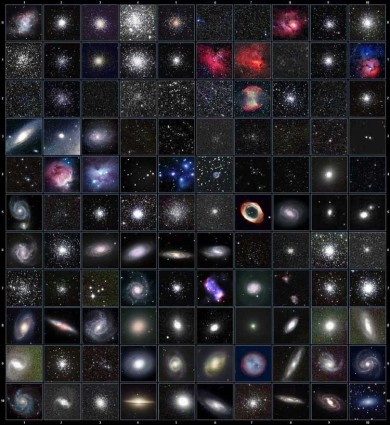
What is it?
A Messier Marathon is when one person with a telescope attempts to observe all 110 Messier objects over the course of one night.
When is it?
Messier Marathons typically take place from mid-March to early April on nights near the new Moon. This is when it is possible to see all 110 objects from middle to lower northern latitudes. Partial Marathons (where parts of the Messier Catalog are observed) can occur at any time of year.
Where is it?
Messier Marathons can be accomplished by individuals in their favortie dark-sky location. Local astronomy clubs host organized events for serious telescope enthusiasts at dark-sky locations.
Preparing for it.
Like all marathons, there is training involved to prepare for a Messier Marathon. Click below for a Messier Object List prepared by our own Wes Covalt. Head out on any clear night and try to find as many of the objects as you can. For the Marathon night, you will have to be fast to catch the first bunch of Messier Objects before they set in the west.
Who was Messier?
Charles Messier was a French Astronomer (1730 - 1817) who was inspired by comets. He observed his first comet when he was 14 years old - the great six-tailed comet of 1744. He wanted to discover and name comets.
Halley’s Comet was expected to be visible in 1758. Messier started looking for Halley’s Comet in 1757. He started a list of “fuzzy objects” that at first looked comet-like but moved with the background of stars. These objects turned out to be galaxies, nebulae, and star clusters and his list became the Messier Catalog. While looking for Halley’s Comet, he observed what would later be called M32 - a neighbor of the Andromeda Galaxy.
Messier’s associates of the time called him the “comet ferret”. He discovered lots of them - 20 all together. He is credited with being the original discoverer of 13 of these comets. Messier first published his catalog in 1769 with 45 entries. The Messier Catalog contained 103 official entries when he died, though he had handwritten in M104. The final six were added after his death based on his own observations and those of his close friend and colleague, Pierre Méchain (M104 - M109).
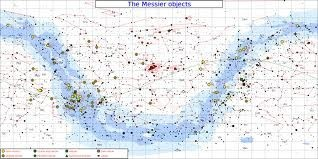

Meteor Showers
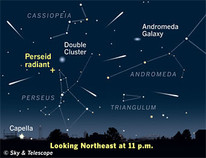
Perseid Meteor Shower
The Perseid Meteor Shower is the most famous of the meteor showers. It is so named because the meteors seem to radiate from the constellation Perseus, near its border with the constellation Cassiopeia.
The peak night to watch these “shooting stars” is August 12 starting at 10:30 PM through the early morning hours of August 13. In 2012, the waning crescent Moon will rise at around 2:30 AM joining Jupiter in the eastern sky. Venus adds to the splendor shortly after 3 AM.
During this peak evening, if you are under dark skies away from city lights and other sources of light pollution, you can expect to see up to 100 meteors per hour. These meteors are traveling at 37 miles per second!
Perseid meteors are leftover debris from Comet Swift-Tuttle. This comet was first observed in 1862. The Perseid Meteor Shower has been observed since 36 A.D. Catholics refer to the Perseids as the “tears of St. Lawrence” because they fall on and around August 10 which is the Feast of St. Lawrence.
You can view Perseid meteors for several weeks surrounding the peak night. The Earth passes through the debris stream from July 17th until August 24th.
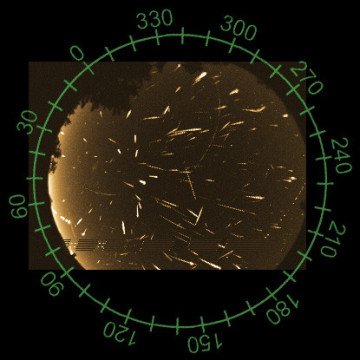
Orionid Meteor Shower
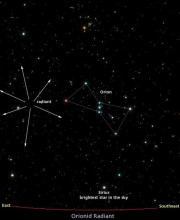
During mid to late October is the time to watch the Orionid Meteor Shower. The Shower will peaks on October 21 in the pre-dawn hours, though the shower lasts from October 15 - 29. At peak you should be able to seeabout 20 meteors per hour if you are under dark skies away from city lights…
The Orionid Meteor Shower is so named because all of the “shooting stars” seem to radiate from the constellation Orion. If you trace back the path of each meteor, it should go just to the left of the club of Orion. The waxing crescent Moon will set at midnight on Saturday leaving us with beautifully dark skies for meteor viewing. During this meteor shower, Jupiter will be directly above the radiant point making this shower looks like sparks from Jupiter.
The Orionid Meteor Shower is caused by debris left behind by Halley’s Comet which was last seen in our neighborhood in 1986. The debris from Halley’s Comet also produces the Eta Aquarid Meteor Shower in May. The debris ranges in size from the size ofa pea on down.
The Orionid Meteor Shower was first observed by the Chinese in 288 A.D.
Bundle up, grab a cup of your favorite hot beverage, and head outside for a beautiful October show!
This event is free and open to the public ;)
Leonid Meteor Shower
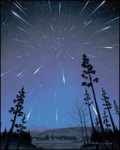
This is the time of year for raking leaves, finding the perfect turkey, and watching the Leonid Meteor Shower. Leonid Meteors can be seen from November 10 - November 23, with the peak night being November 17 into the early morning hours of November 18. Expect to see between 10 - 20 meteors per hour (on a normal night you might see between 4 - 6 per hour). In 2011, bright moonlight from the waning gibbous Moon which rises at 11:31 PM on the 17th will interfere, so look toward the darkest part of your sky.
The Leonid Meteor Shower is caused by debris left behind by Comet Tempel-Tuttle. The debris ranges in size from the size of a pea on down. The Leonid Meteor Shower was first observed in 1833 as a meteor storm when thousands of meteors fell per hour. They seemed to all be coming from the constellation Leo.
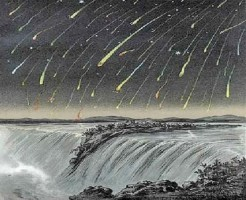
As you can see from this drawing, the sky was literally raining meteors. In Athens, OH, we observed a meteor storm during the Leonids in 2001 in the early morning hours of November 18, 2001, when thousands of meteors fell per hour for several hours. It was a stunning display!
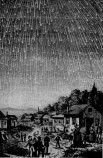
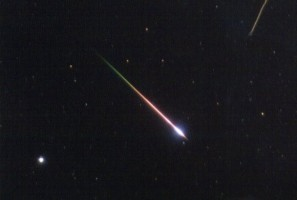
The Leonids are best observed in the early morning hours as the constellation Leo climbs towards the zenith. Grab a lawn chair (preferably one that reclines), a blanket or sleeping bag (it’s cold out there), and some hot chocolate, and then, in the words of the late Jack Horkheimer, “Keep looking up!”
This event is free and open to the public :)
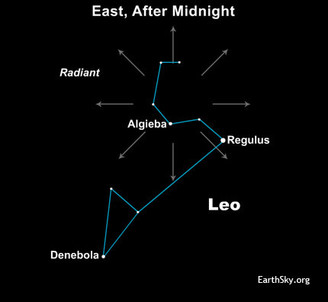
Geminid Meteor Shower
The Geminid Meteor Shower is unique in that these meteors are debris left behind by an asteroid, whereas all other meteor showers can be traced toa parent comet. The Geminids are left behind bits of the asteroid Phaethon. Why this rocky asteroid is leaving behind bits that become our meteors is still under study.
The Geminids seem to radiate from the constellation Gemini. The shower lasts from December 6 to December 18 with the peak being on the night of December 13/14. During the peak, up to 80 meteors per hour can be seen under ideal conditions.
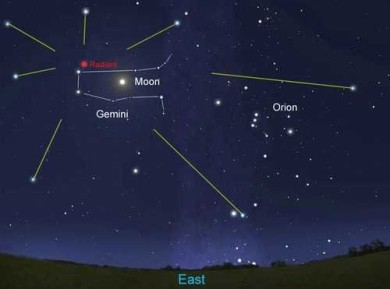
The Geminids were first discovered in 1862. During the early years, rates ran between 10-20 meteors per hour, and rose steadily through the 1970s. The rates have remained consistently in the 80 meteors per hour range ever since.
Quadrantid Meteor Shower
The Quadrantid Meteor Shower can be the most active meteor shower of the year, but getting to see these meteors can be problematic. The peak of the shower lasts for only a few hours with rates as high as 120 meteors per hour. The waning gibbous Moon will interfere. Even so, the best time to watch is from 1 AM to dawn on January 3rd. Besides dealing with freezing temperatures, it is also the cloudiest time of the year.
The Quadrantid Meteor Shower was named for a now defunct constellation - Quadrans Muralis (mural quadrant). The radiant is below the Big Dipper and above the constellation Bootes. It was believed to be an orphan meteor shower with no parent comet, until 2003 when it was linked to asteroid 2003 EH1 by Peter Jenniskens. This asteroid is thought to be expired comet C/1490 Y1.
Quadrantid Meteors can be observed from December 28 through January 10, with the peak falling on the evening of January 2-3. Qudrantid Meteors travel at a speed of 25 miles per second (41 kph). The peak has been predicted to be from 1 - 6 AM on January 3rd. Bundle up, grab your favorite hot beverage and drag out that lawn chair if the skies are clear. You won’t be disappointed!
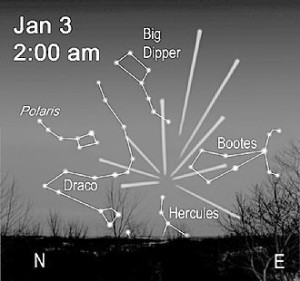
THIS WAS OUR WRAP-UP FROM 2012. STAY TUNED TO SEE WHAT HAPPEND WITH THIS SHOWER IN 2013. (January 5, 2012) The actual meteor counts are coming in showing a peak rate that is far short of the expected rate. The International Meteor Organization is posting actual counts. Click here to go to their website.
Locally, we had high clouds from 2 - 3 AM obscuring all but the brightest meteors. From 3 - 4 AM, we had clearer skies but very few meteors. Local counts were in the 10 - 20 meteors per hour range. Observers were able to watch the NASA live video stream and to hear meteors using Space Weather Radio.
Lyrid meteor Shower
The Lyrid Meteor Shower is not considered a major shower, but from time to time it does flare up to put on quite a show. The Lyrid Meteors are debris left behind by Comet Thatcher. Typically, you would see 10 - 20 meteors per hour especially during the pre-dawn hours on the 22nd. These meteors are not very bright so any moonlight will make the shower a bust. This year (2012), we have a moonless night for the shower.
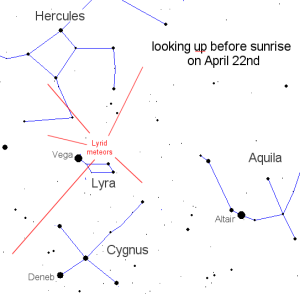
Lyrid Meteors appear to originate in the constellation Lyra. Lyrid Meteors can be seen from April 16th to the 26th, with the peak being on the evening of April 21/22. There have been several recorded instances of the Lyrid Meteor Shower producing a meteor storm with hundreds of meteors per hour.
The Lyrid Meteor Shower is the oldest of the meteor showers dating back to 687 B.C.
Be sure to bundle up when you head out to watch this shower - April evenings can still be frosty!
This page is under construction. Please check back. We will be adding content on all the other major meteor showers.
Observatories and Planetariums
Anderson Hancock Planetarium
Marietta, Ohio
The Anderson Hancock Planetarium is located on the campus of Marietta College, Marietta, OH. The Planetarium seats 102 people, and holds monthly shows which are free.
Apache Point Observatory
Sunspot. New Mexico
The Apache Point Observatory houses several telescopes which can be operated remotely. The Astrophysical Research Consortium’s 0.5 m telescope is here. This telescope gives consortium members the ability to conduct small observational projects. For photos, click here.
Cincinnati Observatory
Mt. Lookout, Cincinnati, Ohio
The Cincinnati Observatory is a National Historic Landmark and an important piece of the history of astronomy in our country. The Observatory holds regular public Astro Nights, as well as many special events.
Clark Planetarium
Portsmouth, Ohio
The Clark Planetarium is located on the campus of Shawnee State University. The 66 seat Planetarium holds free public shows on Mondays and Thursdays. Be sure to see the murals on the flood walls while you are in Portsmouth.
Erie Planetarium
Erie, Pennsylvania
The Erie Planetarium is sponsored by the Erie County Historical Society and is located in the carriage house of the Watson-Curtze Mansion. They hold shows most Saturdays. Click here to see pictures of the Planetarium.
National Radio Astronomy Observatory (NRAO)
Green Bank, West Virginia
The National Radio Astronomy Observatory houses the Robert C. Byrd Green Bank Telescope which is the largest fully steerable dish in the world! The NRAO offers tours of the facilities and star parties.
National Solar Observatory (NSO)
Sunspot, New Mexico
The National Solar Observatory- Sacramento Peak Facilities are keeping an eye on our nearest star. The Apache Point Observatory is next door. Don’t miss the Armillary Sphere and Sundial at the Sunspot Astronomy and Visitor Center. For pictures, click here.
Palomar Observatory, San Diego County, Southern California
For over forty-seven years (1948-1995), the 200-inch Hale Telescope on Mount Palomar was the world’s largest functional optical telescope. It was the “Hubble” of its day for generations of Americans. For visitor pictures, click here.
Perkins Observatory
Delaware, Ohio
The Perkins Observatory is located on the campus of Ohio Wesleyan University. The Planetarium offers shows most Friday nights.
Stephens Memorial Observatory
Hiram, Ohio
The Stephens Memorial Observatory is housed at Hiram College, Hiram, Ohio. The Observatory holds Open Nights once a month. For pictures of the Observatory, click here.
Warren Rupp Observatory
Lucas, Ohio
The Warren Rupp Observatory is maintained by the Richland Astronomical Society at the Hidden Hollow Campground. The telescope is 31" and is the largest, computer-assisted, amateur operated telescope in the world! It is an easy trip to the Hidden Hollow Campground near Mansfield, OH, for one of their Open Telescope Nights or for their famous Hidden Hollow Star Parties. For pictures taken by society members from this location, click here.
Outdoor Lighting
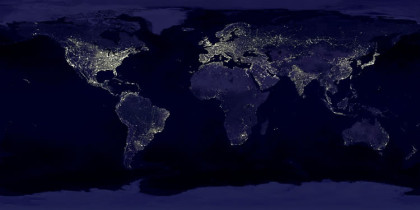
This is a picture of waste. Wasted light equals wasted energy. Light visible from space after dark is not helping anyone on Earth. Light shining into space is of no help in finding directions, no help in avoiding pitfalls and curbs. No help in avoiding assault. It is all conspicuous waste. This wasted light also represents tremendous amounts of environmental damage such as habitat loss and water pollution from mining, air pollution and acid rain and global climate change from burning of fossil fuels - all to shine light into space. And, it makes the stars more difficult to see.
This is a picture of light pollution.
Let’s work together to direct the light we need at night down to where we use it.
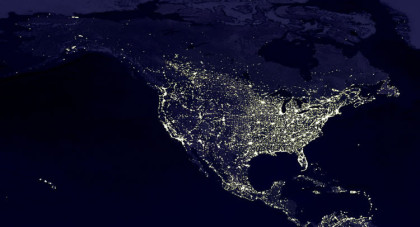
Ohio Contributes to the Loss of Night Sky Heritage

Can you find your hometown? Places that are difficult to find in daylight with a map are easily visible from outer space at night because of the enormous waste of energy from poorly designed night lighting.
Note Lake Erie at the top and the Cleveland-Akron megalopolis in the uppr right. Columbus dominates the center of the image while the Dayton -Cincinnati sprawl accounts for the lower left portion of the image. Many of the points of light in the bottom half of the image represent cities and towns along south flowing streams and the Ohio River flows south and southwest from the upper right portion of the image. You can follow the bright dots over to the Cincinnati area.
Light that can be seen from space after dark represents a considerable amount of conspicuously wasted energy. The light is not being used to help one read maps or signs after dark; it is not helping anyone to avoid tripping over a curb or falling in a hole after dar, and it is not keeping anyone safe from mugging or assault in the night time. It is light simply shining into space. That light not only represents wasted energy, it represents the destruction of land and forests and the pollution of streams resulting from the recovery of fossil fuels. It represents the acid rain, species extinction and global climate change aggravated by the uncontrolled combustion of fossil fuels and the release of noxious emmissions into the atmosphere. It also represents the loss of stars and the continued degradation of the natural heritage of our night skies.
What can you do to reduce light pollution?
From the International Dark-Sky Assocation (IDA):
Just remember that dark sky friendly lighting does not mean dark ground. Use outdoor light at night only when and where it is needed and at appropriate lighting levels. Use fully shielded, light efficient fixtures aimed downward where it is needed. Incorporate timers and sensors to shut off lights when not in use.
Locally, in Athens, OH, we have an Outdoor Lighting Ordinance…
City of Athens Outdoor Lighting Ordinance

Adopted on July 7, 2003
Section 21.03.25 Outdoor Lighting
OUTDOOR LIGHTING MAY BE ERECTED IN ACCORDANCE WITH THE FOLLOWING RESTRICTIONS:
(A) LIGHT POLLUTION AND GLARE – ANY LUMINAIRE WITH A LAMP OR LAMPS RATED AT A TOTAL OF MORE THAN 1800 LUMENS, AND ALL FLOOD OR SPOT LUMINARIES WITH A LAMP OR LAMPS RATED AT A TOTAL OF MORE THAN 900 LUMENS, SHALL NOT EMIT ANY DIRECT LIGHT ABOVE A HORIZONTAL PLANE THROUGH THE LOWEST DIRECT-LIGHT-EMITTING PART OF THE LUMINAIRE.
(B) LIGHT TRESPASS – LIGHTING SHALL BE DESIGNED TO MINIMIZE ILLUMINATION OF ADJACENT LOTS AND STREETS. IN NO CASE SHALL ILLUMINATION EXCEED 0.1 HORIZONTAL OR VERTICAL FOOTCANDLES AT THE PROPERTY LINE.
What is a lumen?
We typically buy bulbs based on the wattage, which describes the total power used by the bulb. But not all of this power is emitted as visible light; some escapes as heat. The number of lumens describes the power that is actually emitted as visible light. Packaging for bulbs and lamps usually indicates the number of lumens, as well as watts. It’s right on the box!
For reference, a 60-watt incandescent bulb emits approximately 1000 lumens! A threshold of 1800 lumens would correspond approximately to a 100-watt incandescent bulb. Typical streetlights in Athens produce 16,000 lumens.
What is a footcandle?
A footcandle is a unit describing the power in visible light falling per unit area on a surface. Specifically, a footcandle is a lumen per square foot. The number of footcandles detected by a light meter may depend on the orientation of the meter. It is common for footcandles to be specified as “horizontal footcandles”, corresponding to the meter detector held in a horizontal position; or “vertical footcandles”, with the meter held in a vertical position.
For reference, the full Moon produces an illumination on the ground of approximately 0.017 (horizontal) footcandles. The Illuminating Engineering Society of North America recommends a minimum of 0.2 footcandles for illumination of pedestrian and parking areas with light use. An unshielded 60-watt (100 lumen) incandescent bulb would produce illumination of 0.1 footcandles or less at distances of 28 feet or more.
Light Pollution and Wildlife
Light pollution has an affect on the natural world. From the Folly Beach Turtle Watch Program:
Practice and Preach “Lights out for Turtles!”
Artificial lights affect the nesting and hatching of sea turtles. Brightly lit beaches are a deterrent to nesting females and a deathtrap for hatchlings. Instead of being attracted by the natural light of the moon and starlight on the surf, hatchlings move toward the brighter beams of streetlights, porch and deck lights, floodlights, interior lights, car headlights, flashlights, etc. They fail to find their way to the ocean quickly and become the victims of ghost crabs and gulls, or die from dehydration in the morning sun. Dark beaches are critical to sea turtle survival. Help educate others about the importance of “lights out for sea turtles!”
For more information about the Folly Beach sea turtles and what folks in Folly Beach are doing to protect them
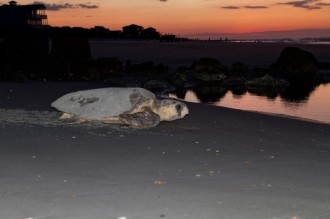
The Effects of Light Pollution on Migratory Birds
In 1968, the 100 story John Hancock Center in Chicago was completed. It wasn’t long after that dead birds were found at the base of the building each morning, especially during the migration seasons of spring and fall. These were migratory birds that were thrown off their course by the lights on the building - causing them to crash into the building. William Beecher of the Chicago Academy of Sciences showed these dead birds to the media and to the building’s owners in the hope that they would dim the lights during the times of migration. It didn’t happen right away, but it did happen. This was the beginning of the “Lights Out” movement. Now Chicago is a model for dimming the lights on the tall buildings from dusk to dawn during spring and fall, and the “Lights out” movement has spread across the country.
The National Audubon Society has taken a leading role in protecting migratory birds from light pollution through the “Lights Out!” movement.
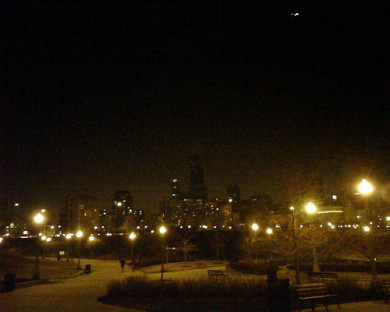
So, what should you look for? What kind of lights are good?
The folks at SkyandTelescope.com have made it easy for us…
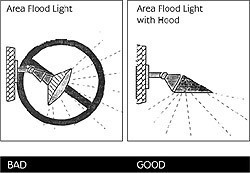


Need more info on good outdoor lighting fixtures?
Check out these links…
- Good Outdoor Lighting Examples by Skykeepers
- Dark Sky Friendly Devices by International Dark-Sky Association
- Good Neighbor Outdoor Lighting by Sky and Telescope
- Good Neighbor Outdoor Lighting by Green Acton
- Good Neighbor Outdoor Lighting by New England Light Pollution Advisory
PAST EVENTS - Here is what we’ve been up to for the past 12 months.
Open Telescope Night
July 26, 2013
Lamping Homestead Campground
We had a wonderful time at the Lamping Homestead Campground, which is part of the Wayne National Forest, for an Open Telescope Night from 9:30 - 11 PM on Friday, July 26. We had several telescopes focused on Venus, Saturn, Albireo, M13 (the Great Globular Cluster in Hercules), M51 (the Whirlpool Galaxy), and M101 (the Pinwheel Galaxy). Thanks to our Astronomers at Lamping: Maryann Hartwick, Mark Richardson, Andrea DeMott and George Eberts.
Open Telescope Night on The Ridges
July 13, 2013
9 - 11 PM
We had a great crowd join us up on The Ridges! We focused our telescopes and binoculars on the waxing crescent Moon, Saturn, and the Ring Nebula. Thanks to our Astronomers on The Ridges: Dan Lazarz, Maryann Hartwick, Andrea Demott, George Eberts and Tom O’Grady.
The photo gallery requires at least Flash version 9.0.28.
Please install the latest FlashPlayer.

Safe Solar Viewing at the
Athens Farmers Market
10 AM - 2 PM
June 15, 2013
We had a great time at the Athens Farmers Market (located at the Market on State)! Several hundred people stopped by to see the Sun was putting on quite a show with multiple solar prominences and 3 gorgeous sunspot groups. Thanks to our Astronomers at the Market - Steve Bush, Maryann Hartwick and Joe Shields.

Open Telescope Night
and StarWalk on The Ridges
June 14, 2013
8:30 - 11 PM
Thanks to everyone who came out to The Ridges to go on the StarWalk and spend some time at the telescopes. The waxing crescent Moon and Saturn were beautiful! Thanks to our Astronomers on The Ridges: Tom O’Grady, George Eberts, Maryann Hartwick, Andrea DeMott, Steve Bush, Gordon and Beth Muhlberger, Yu Zhang, and Kathleen and Wes Covalt.
Open Telescope Night
June 7, 2013
Lamping Homestead Campground
Canceled due to heavy cloud cover
Star Parties
Listed below are some of our favorite star parties. For a more complete list, check out the Astronomy Events Calendar.

Black Forest Star Party
Cherry Springs State Park
4639 Cherry Springs Road
Coudersport, PA
(814) 435-5010
September 6 - 8, 2013
The Black Forest Star Party occurs annually during late summer or early fall. It is hosted by the Central Pennsylvania Observers (CPO). It is held in Pennsylvania’s first Dark Sky Park at the Cherry Springs State Park. In 2011, George Eberts, Tom O’Grady and Bob Eichenberg made the trip and have plenty of pictures to share.

Cherry Springs Star Party
Cherry Springs State Park
4639 Cherry Springs Road
Coudersport, PA
(814) 435-5010
The Cherry Springs Star Party occurs in late May or early June. It is hosted by the Astronomical Society of Harrisburg, PA. It is also held at the Cherry Springs State Park in central Pennsylvania. This is a relatively new star party, having been started in 2009.

HIDDEN HOLLOW STAR PARTY
Warren Rupp Observatory of the Richland Astronomical Society
Hidden Hollow Campground
5127 Opossum Run Road
Lucas, OH 44843
(419) 892-2007
The Hidden Hollow Star Party occurs yearly and was previously held during the first weekend in October. For 2013, it is being held October 3 - 7. It is hosted by the Richland Astronomical Society. It features tons of telescopes, including the 31 inch telescope housed inside the Warren Rupp Observatory. It takes place at the Hidden Hollow Campground near Mansfield, Ohio. For pictures from several different years of Hidden Hollow, click here.

Scope Out Astronomy Fair
September 14, 2013
Cincinnati Observatory
The Cincinnati Observatory (3489 Observatory Place, Cincinnati, OH 45208) celebrates the telescope with an all-day (and all night) open house called ScopeOut.
Scope Out is an opportunity for people of all ages to look at the latest and greatest astronomical equipment offered by local and national vendors. Activities include, classes, educational materials for teachers, kid’s space crafts, safe viewing of the Sun, swap table, meteorites, tours of our historic buildings and more astronomical door prizes than you can imagine. ScopeOut takes place on the second Saturday in September.

StarFest 2013: Comet Tales!
River Place Park,
RR 3, Ayton, Ontario, Canada
Phone:519-665-2228
August 8 - 11, 2013
StarFest 2013 is Canada’s largest annual amateur astronomy conference and star party attracting hundreds of astronomy enthusiasts from Ontario and neighboring provinces and states. It has also been ranked among the top star parties in North America by Sky and Telescope magazine. This year, they are focusing on comets - past, present and future. StarFest is sponsored by the North York Astronomical Association.

Stellafane Convention
Breezy Hill
Springfield, Vermont
August 8 -11, 2013
The Stellafane Convention is for amateur telescope makers and has been going on since 1926. It is a yearly star party that takes place in August.

White Sands Star Party
White Sands State Park
Alamogordo, New Mexico
Contact: New Mexico Museum of Space History Education Department
(877) 333-6589
October 8 - 9, 2013
The White Sands Star Party is an annual event taking place in October. It is hosted by several organizations: New Mexico Museum of Space History, White Sands National Monument, the Alamogordo Astronomy Club, and the Astronomical Society of Las Cruces. This star Party is held at the White Sands National Monument in New Mexico, within the world’s largest gypsum dune field. The sand is indeed white! Incredibly white! For the serious amateur astronomer, it is definitely worth the trip to this special dark sky location. For pictures from the 2010 White Sands Star Party, click here.
What’s Coming Up?

Tom O’Grady takes you on a tour of what’s interesting to see in the night sky, with an occasional comment about the daytime sky. Check back from time to time to see
‘What’s Coming Up’.
From Sky and Telescope
Saturn and Venus Replace Jupiter for the Summer (5/10/2013)
Jupiter has been a splendid addition to the evening skies for several months. We lapped it in our orbit around the Sun a while back and are now (mid-May) on the far side of the Sun ready to put it between us and the giant planet. Jupiter is now setting in the west before twilight is finished. Jupiter will join the planet Venus and Mercury for a few evenings after twilight and then will be lost to the evening sky for a few months. Don’t miss this gathering of the celestial royalty in the western twilight toward the end of May.
Jupiter will next be visible low in the eastern sky before sunrise beginning in mid-July. You’ll have to rise early to be rising with Jupiter.
Venus left the morning sky early this winter and has been working its way around the far side of the Sun. It will now start to appear low in the western skies at twilight. Passing through that section of the Zodiac where it is headed this year it will remain rather low and relatively close to the sunset. It should be somewhat higher and brighter by the winter holidays but will be worth watchinglooking for in the fading twilight through summer and autumn.
Saturn, however, is front and center for the summer. Having spent the past few years trudging its way through the constellation of Virgo, Saturn is now gracing the region of Libra, the Scales. The best way to find Saturn these days is to star hop your way to it. Find the Big Dipper. Follow the arc of the Dipper’s handle to Arcturus. Continue along that arc until you come to Spica in Virgo. Spica is quite bright. As you are looking at Spica, notice the bright object to its left, or east. That is the ringed planet. It has a yellow hue to it compared to Spica. That is sunlight bouncing off of the cloud tops and rings of that heavenly orb.
Saturn resides by itself in a rather dark and empty part of the sky between Spica and the not-so-bright, not-so-square box of stars that account for the constellation of Libra, the Scales. The two leading stars are brighter and closer together than the trailing two stars that make up this rather unimpressive polygon occupying the space for Libra along the Zodiac. These two stars have a long and interesting history to go along with their long and interesting names, Zubenelgenubi and Zubeneshcamali.
Scales of Libra - from Wikipedia
Saturn Bridges Virgo and Libra This Summer
Libra is not one of the outstanding star groupings along the Zodiac. A sight easier to find than Cancer and Pisces maybe, but it lacks something in its presentation. However, one can spend a bit of time considering some of the stars and their relations with this and the other nearby constellations.
Saturn draws some attention to the two stars to its east, Zubenelgenubi and Zubeneschamali. There’s a mouthful. The names are derived from the Arab language, as are the names of so many stars. Zubenelgenubi means claw of the north and Zubeneschamali means claw of the south. It is presumed that these names refer to the claws associated with Scorpius. References to that celestial arthropod with the venomous stinger go back to the time of the Babylonians. These two stars hold the place of these claws reaching out toward Virgo.
Apparently the Greeks and Romans separated this part of Scorpius into the constellation of Libra, the Scales, possibly because the Sun shown in front of these stars at the time of the autumn equinox over 2000 years ago. The balance of the scales may symbolize the equal lengths of day and night that attend the time of the equinox.
Because of the Earth’s wobble, precession has put the Sun in front of the stars of Virgo at the time of the autumn equinox in the modern era. Babylonians, Greeks and Romans all associated Virgo with wheat, agriculture, or fertility. She is often depicted holding a sheaf of wheat or some form of grain represented by the bright star, Spica. The name Spica derives from the Latin spīca virginis “Virgo’s ear of grain” (usually wheat). A blue giant shining with a luminosity some 2300 times that of the Sun, the 17th century German astronomer Bayer and others of that period referred to the star as Arista.
An 1886 bas-relief figure of Astraea (or Virgo) holding the scales in the Old Supreme Court Chamber at the Vermont State House. Wiki
While Virgo has regularly been associated with the harvest, according to some Greek mythology, Virgo represents Astrea, a Greek goddess of justice, holding Libra the Scales. Blind Justice holding the scales stands atop many a courthouse in America today. Might it have a connection to the stars in the night sky? Astraea’s nativity seems a bit confusing. Some sources put her as the daughter of Zeus and Themis, another goddess often associated with justice. Astraea is also called the daughter of Astraeus and Eos (Dusk and Dawn).
Themis - Lady Justice with scales and sword in front of public building. Wiki
Astraea, star-maiden, and her mother were both personifications of justice, though Astraea was also associated with innocence and purity, like the dawn. She is always associated with the Greek goddess of justice, Dike. Astraea, the daughter of the father of the stars, Astraeus, wears a couple of different hats in the night sky being associated with both the harvest and justice.
Who said that mythology or the night sky were simple? Sort it out for yourself. Spend a little time this summer contemplating the skies around Saturn, the god of the harvest, sometimes characterized as Father Time wielding the harvesting scythe. This, because during antiquity his Greek name Cronus was often interpreted as Chronos, the personification of Time.
Saturn Cutting Off the Wings of Cupid 1882 by Ivan Akimov. Wiki
A somewhat troubling character in mythology he is sometimes depicted eating his children and other times cutting off the wings of Cupid with his scythe. How appropriate that time and space, equinox and harvest, Virgo and the scales of Libra and justice all surround Saturn and Zubenelgenubi and Zubenescamali for these long summer evenings. Gives us pause and something to think about.
Comets Lemmon (upper left) and PanStarrs (lower right)
Comets on deck (3/2/2013)
2013 appears to be the year of the comets. Two comets are gracing the sky in the southern hemisphere as of early March. Comets Lemmon and Pan STARRS can both be seen in a common glance in the evening twilight a considerable distance south of Ohio.
However, prepare for the Ides of March. Around the 15th of the month Comet Pan STARRS may be visible in the twilight sky above and to the left of the waxing crescent Moon. It may be rather faint and will require a bit of effort to spot it, but therein lies the reward. Catching a fleeting glimpse of a temporary visitor to the inner solar system is a special event. Most people will not have the experience. Seeing an object that was not there before, is there now, and then gone shortly reminds us of the real action that is taking place in the cosmos.
But the best hope for cometary exuberance comes later in the year. After Thanksgiving in 2013 we are expected to be visited by a comet, the likes of which has not been seen since the 17th century. Comet ISON offers great promise at this point. The head of the comet is expected to be as bright as the Moon and could be visible in the daytime sky while the sun is shining brightly.
Comet enthusiasts have reason to restrain their expectations regarding comets. Pan STARRS had a bit greater build-up than it is likely to deliver this spring. Those waiting for years for a glimpse of Halley’s Comet in the 1980’s saw little more than a faint smudge to the naked eye and only a bit more through a telescope. Halley’s Comet didn’t present the kind of display in the sky which it had so many times in the past and as so many people had hoped. It wasn’t in the stars for the most recent lap around the sun to be one of the memorable passings.
Probably the biggest lesson learned by comet watchers was with Kohoutek in 1974. Lauded as the Christmas Comet, the Comet of the Century, and other overstated modifiers, it shined brighter as an artist’s rendition on the cover of Time Magazine than it did in the night sky. Passing by the sun at perihelion apparently evaporated much of the coma of this tailed visitor.
So, we will see what comets have in store for viewers in the northern hemisphere in 2013. Keep your fingers crossed for a good showing of these hairy stars.
Follow the arc of the Dipper’s handle to Arcturus and Spica
Arc to Arcturus
The Big Dipper is one of the most easily distinguishable asterisms in the night shy. From southeastern Ohio it should be visible every clear night from dusk until dawn. In the springtime it can be seen standing on its handle to the east or the right of the North Star.
As the evening progresses the bowl of the Dipper will work its way above Polaris and the handle will be seen to arc toward the eastern horizon. At some point one should be able to follow the arc of the Big Dipper’s handle toward the horizon and see the fourth brightest star in the night sky blinking through the colors of the spectrum as it rises above the eastern horizon. Arcturus is a red giant star about 36 light years distant from Earth. Arcturus is a commanding point of ruddy orange-yellow light when it is soaring through the night sky. It rises fairly far north along the eastern horizon and eventually swings directly overhead at these mid-latitudes of the northern hemisphere.
Arcturus holds a place at the base of a kite shaped pattern long known as Bootes the Herdsman. A goatherd to be exact. But the name Arcturus comes from the Greek signifying the guardian of the bear. Circling Ursa Minor as it does and following Ursa Major it seems to end up herding bears instead of goats. Being so well associated with the far north it appears to have leant its initial to the northern region of the planet above the Arctic Circle.
While you are following the arc to Arcturus you might continue along that same arc and a bit later in the evening it will take you to the rising location of the blue star, Spica, in Virgo the Virgin. Virgo is usually depicted in artistic renderings grasping a sheaf of wheat of a grain of some sort. Spica represents that seed head.

Exit the Summer Triangle
Enter the Winter Triangle
The Summer Triangle, the asterism made up of the brightest stars in Lyra, Cygnus and Aquila has commanded the largest part of the high center of the sky for months. Vega, in Lyra the Lyre, Deneb, in Cygnus the Swan, and Altair in Aquila the Eagle, have been mainstays in the night sky all night long for six months.
All of that is changing. The Summer Triangle is giving way to its winter counterpart. As you watch the stars of the Summer Triangle decline in the western sky, look to the east and see Betelgeuse rising. Betelgeuse, the red giant star in Orion the Hunter is the first of the three to rise in the east. It shows up on the horizon flashing through the colors of the spectrum. Betelgeuse is a good way off. Its distance is confusing astronomers. It has recently been increased from about 430 light years to around 600 light years distant from the Earth. It is thought to be about 15 times the mass of the Sun and about 600 times the diameter. It may be about 50,000 times brighter than our Sun. We can see Betelgeuse quite well from here but it is not likely our Sun can be seen from there.
As Orion rises higher above the eastern landscape, watch the spot along the horizon that the belt stars of Orion point toward. There will rise Sirius, the dog star, brightest star in Canis Major and the most luminous star in the night sky seen anywhere from the surface of the Earth. Now that star will twinkle and blaze with changing colors as it rises. It resembles a small traffic light constantly changing colors as it ascends above the horizon. Sirius is approximately eight light years away from Earth.
It is followed shortly, some distance northward along the eastern horizon by Procyon, the brighter of the two stars that make up the little pup called Canis Minor. Procyon means 'before the dog." That name is a relic from an earlier time when Procyon used to rise shortly before Sirius during the reign of the Pharoahs. Its rising signaled the soon to rise Sirius, a star of great import to the early Egyptians. Procyon is another neighbor of ours, relatively close at a little more than 11 light years distant.
Procyon completes the Winter Triangle. The most conspicuous difference between the two triangles is that the triangle of summer is a longer, narrower, acute triangle while that of winter appears equilateral.
The Winter Triangle does not tower overhead and pass near the zenith as does the triangle of the summer time. The Winter Triangle rises more to the southeast and passes over the meridian to the south and sets in the southwest.
While the Summer Triangle is home to a few other smaller and less significant constellations such as Sagitta the Arrow, Vulpecula the Fox, and nearby Delphinus the Dolphin, the Winter Triangle is home to the invisible unicorn known on star maps as Monocerus. If you want to see Monocerus - look at a star map. That’s the only place you are likely to see it. Otherwise, look into the center of the Winter Triangle and, although you are not likely to see Monocerus, you will be staring right at it. Imaginations of the modern era may not be as robust as they were in earlier days. That or the skies are considerable more polluted with light.
When the Winter Triangle is aloft the brightest stars of the year are in the sky. Orion the Hunter with his two dogs are sparking a rabbit (Lepus the Hare) alongside the meandering river called Eridanus. Across the river Eridanus from Orion is the bull known as Taurus. Taurus is made op of the Hyades star cluster and the bright red giant Aldebaran and the nearby group of gals known as the Pleiades, the Seven Sisters, daughters of Atlas (the fellow they named the big book after which contains all of those maps). The Japanese call that star cluster Subaru.
Over the back of the little dog you can easily see the Gemini Twins sticking their feet in Orion’s face. Gemini can be identified with the two bright stars that designate the heads of this pair of brothers, Castor and Pollux. Pollux is the brighter of the two but close investigation of Castor over the past few centuries has revealed that this sibling, while not brighter is rather sensational. It may look like a single star to the unaided eye, telescopes have discovered that this dimmer of the two is really made up of six stars - three binary systems orbiting a common center of gravity. Check that out in your mind’s eye!!!
The Winter Triangle heralds the appearance of a a host of new targets for stargazers and they do not disappoint.

Orion - Like a Signpost in the Sky Points Westward to Taurus and The Pleiades and Eastward to Canis Major
In The Starsplitter, a poem about a fellow in Vermont who burned his house down for the insurance so he could buy a telescope about a hundred years ago, Robert Frost said "“You know Orion always comes up sideways. / Throwing a leg up over our fence of mountains,…”
Indeed he does.
Orion, rising in the east just after dark with bright red Betelgeause and Bellatrix is followed by Orion’s belt stars. Note that the belt stars point upward away from the horizon and aim essentially at the stars of Taurus the Bull and The Pleiades.
Taurus is the V shaped group of stars coming up on its side - open to the north, with the bright red giant Aldebaran at the end of the lower arm of the V. That V shape is actually a star cluster called the Hyades. A small pair of binoculars will reveal a lot more stars in that grouping than meets the unaided eye. Jupiter is off to the left or north as you watch Taurus get higher in the eastern sky.
Back to Orion. Note that the belt stars are pointing directly down to the horizon. If you keep an eye on the horizon at the point where Orion’s belt stars are pointing, at long last you will see a beacon rising and blinking throught the colors of the spectrum. That flashing light is the brightest star in the night sky as seen from Earth. It is known as Sirius, the dog star. It will not fail to rise exactly at the point where Orion’s belt is pointing. Try it out for yourself and then show someone else.
Sirius is the brightest star in the Constellation of Canis Major, the great dog. This star has held the eye of man in devout admiration throughout all of human history. It played an important role in ancient Egypt. It is said that a shaft was built in the Great Pyramid at Giza with an opening to a crypt or room and that the bright star Sirius passed by that open shaft every day. Well, half the time in the daylight and half in the nighttime.
It is also said that the Egyptian high priests or starwatchers of the pharoah kept track of that brightest of stars and noted that when it rose in the eastern twilight sky, just before dawn, the heliacal rising of Sirius, they could predict the flooding of the Nile River in the next few weeks.
Predicting a flood in our part of the world takes no real talent. If it rains hard enough, long enough, the river is going to rise out of it’s banks. Different story in the Egyptian desert. It doesn’t rain there enough to cause a flood. The flood in the desert around Cairo, Egypt was caused by rains months earlier in the tropics far south in the headwaters of the Nile River, 30 degrees south of the pyramids, near the equator. Those rains swell the load in the Nile River and cause it to rise over its banks in the desert regions furhter north some months later.
Since this was an important event because it enriched the floodplain with nutrients and because it was important not to plant until after the flooding or the crops planted too soon would be lost. This gave the high priests or star watchers a certain amount of power back in the day. It allowed the pharoah to have some control over the harvest and therefore over the masses.
When Sirius is rising in the moments before dawn, it doesn’t get very high above the eastern horizon before the Sun comes up. It moves across the sky from east to west just ahead of the Sun and sets just before sunset. This occurs during the month of August and this time of year is often referred to as the Dog days of Summer for this reason. The dog star is moving across the sky all day with the Sun. Dogging it, you might say.
In somewhat recent history certain researchers investigating the Dogon people, of Mali in West Africa, have reported that they seem to possess advanced astronomical knowledge, the nature and source of which have subsequently become embroiled in controversy. They reported that the Dogon believe that the brightest star in the sky, Sirius has two companion stars and that theyknew this long ago before it was first discovered by scientists. The jury is out on the facts here but it is not surprising the any group of tribal people on the planet Earth would have some keen interest in this brightest of all stars in the night sky.
Take some time and watch it rise. Watch it twinkle and run through the colors or the spectrum. It seems most dramatically colorful when it is closer to the horizon. It is bright but it still doesn’t hold a candle to Jupiter which will be sharing the nighttime with Sirius this winter.

Jupiter Surrounded By Stars
Jupiter is rising in the east earlier each evening. It is well above the horizon by 10pm from Ohio. Look for the Pleiades in the east. Just below the Pleiades will be the Hyades, the V shaped satr cluster that gives its shape to Taurus the Bull. The V is lying on its side with the apex pointing south. The bright red star, Aldebaran tops off the lower arm of the V. Off to the north or left of the Hyades is the very bright Jupiter, king of the gods. Off to the north or left of Jupiter as it is coming up in the east is the constellation of Perseus the warrior, hero.
One of the brighter stars in Perseus is the star Algol, the demon star or the Eye of the Medusa. This star dims out every two and a half days for about four or five hours and then brightens again. This little detail didn’t go unnoticed by the ancients. The questionable behavior, however, wasn’t due to any nefarious activity undertaken by the mythological character, Medusa, but the regular eclipsing binary star system that makes up this varying point of light in the autumn skies.

Venus to be Joined by the Crescent Moon in Predawn Sky
Maybe a Look at the Dark Side Too (of the Moon that is)
The goddess of love will rise in the east along side of the goddess of the hunt before sunrise in a couple of weeks. It should be a fairly close passing of the waning crescent moon and the morning star in mid November.
Not telling which morning is the closest approach. Get up and start looking at the predawn happenings now! Watch the drama unfold. It’s not the single event that’s cool. It’s the day to day changes leading up to the conjunction of these two brightest objects of the night sky. Anyway, it might be cloudy or raining that morning. Might be a blizzard. You never know. But, if you watched the approach for a few days ahead of time you can imagine the culmination of this event in your mind’s eye. Not as good but a decent consolation prize if you’ve been attentive.
The waning crescent moon is always a delight to watch rise - even if it is all by itself. It more than doubles the pleasure when it is joined by Earth’s sister planet in the morning twilight. And there is always the chance that if you make the effort you’ll be treated to a glimpse of the dark side of the Moon as well.
A predawn amusement is gazing upon that dimly lit, gibbous-shaped, almost transparent looking, dark side of our nearest neighbor. Glowing in a faint ashen-gray light, this side of the Moon is sometimes nearly the same color as the background sky. We can only see this phenomenon just before new moon in the morning sky and just after new moon in the twilight following sunset because of twice ricocheted sunlight.
While the sun is lighting up half of the Moon, most of which is facing away from Earth, the Sun is also lighting up half of our world. If one were standing on the dark side of the Moon looking up they would see a large gibbous shaped Earth. That huge body would be relecting sunlight off of the cloud tops, polar caps and oceans. The reflected light would be shining down on the night side of the Moon and lighting it up brighter than the full Moon does the dark side of Earth. That ‘earthshine’ bounces back from the night side of the Moon and can be seen with the unaided eye from the surface of the Earth. From Sun to Earth to Moon and back to Earth so we can ponder and gaze upon the nightime of another world.
All of this while you are having your coffee before work. Oh, yeah - start watching for Mercury and Saturn rising is the east before sunup - while you’re up.

Saturn Joins Venus in the Pre-Dawn Sky
Saturn spent a good part of the summer dancing with Mars and Spica in Virgo in the western skies after sunset. We here on Earth slipped past the Sun putting Saturn behind it for the past month or so. Now Saturn emerges in the morning sky, rather dimly for starters. As the month moves along we will see the distance between Saturn and superbright Venus decrease with the passing days. The pair will find themselves less than a degree apart in the morning sky on November 26. And remember, in Greek mythology, whenever the gods and goddesses are getting together they are often up to no good as far as us mere mortals are concerned. Keep and eye on them. It’s worth checking out as they get closer each day and then pass on their merry ways.

November Offers a Couple of Close-by Visits Between Jupiter
and the Moon
Now that Jupiter is entering our evening sky at a reasonable hour we will have more opportunities to watch it rise and cross the sky in the company of Aldebaran and the Hyades of Taurus the Bull. With the Pleiades nearby and Perseus not far off to the north this is a busy and bright section of the sky. The
Moon will pass by Jupiter around the 1st of November and then again, with an even closer grazing on or about the 28th of the month. In some places around the world the Moon will occult the king of the gods, blocking out the third brightest object in the night sky. We won’t get to see that however.
Nevertheless, November offers some very starry skies after a couple of months of star patterns without too many bright stars or dense groupings of such.

Venus is Scheduled to Rendezvous with the Waning Crescent Moon Before Dawn in Mid October Always Worth a Look-see
Venus is dazzling every morning, high in the east, before the sun comes up. Also a good time to look for the dark side of the Moon. No doubt the album is right where you left it but in this case we are looking for the side of the Moon visible in a faint ashen gray light illuminated by twice ricocheted sunlight. The Sun shines on the Earth and light bounces off the oceans, cloud tops and polar caps and is reflected down onto the dark side of the Moon. It then bounces back toward Earth allowing us to see the faintly lit dark side. Some refer to this as the old Moon in the new Moon’s arms. Awww!
Pegasus, Andromeda, Perseus and Winter Milky Way
Solar System Display Gives Way to
Brighter Stars and Cooler Nights:
Planets Head for Morning Skies
It has been a banner year thus far for stargazers. We had the opportunity to watch as Jupiter and Venus approached each other bit by bit over many nights last winter until they stood side by side in the western twilight in early March. The waxing crescent Moon joined them on occasion and we could gaze upon the three brightest objects in the night sky in their tight grouping in the west. Then they separated, more each evening, as Venus climbed higher above the setting sun and Jupiter slipped into its glare.
There was the great opportunity to anticipate observing the rarest predictable astronomical event with the transit of Venus. How exciting! The small disc of the nearest planet passing across the face of the Sun was seen by millions around the world. Under the heavy overcast skies of southeastern Ohio we had our best view of that event by watching closely in our mind’s eye.
We watched Mars dance with Spica and Regulus as it did its retrograde thing. And we have watched Mars approach Saturn slowly over the course of the summer until they shine together at closest approach in mid August. The two planets form a triangle with bright Spica and then morph into a straight line. A few days later the waxing crescent Moon joins them and makes an attractive clustering of bright objects in the early evening sky. Next we will watch them distance themselves as Saturn begins to decline in the west and Mars resists the westward pull and lingers longer in our evening sky. Saturn will fade in the glowing twilight and Mars will be persistent but faint in the southwest through the rest of 2012.
The solar system has put on quite an evening show but the action has moved to the morning skies with Venus and Jupiter dominating the eastern view on all mornings absent the waning crescent Moon. Saturn will soon join them.
But the season approaches when the display of planets is replaced with the dazzle of bright stars. Perseus and Cassiopeia are coming on stage. The Great Square of Pegasus the Winged Horse is a lead in for Andromeda, Cassiopeia’s daughter. The Pleiades and the Hyades of Taurus the Bull introduce a couple of dense clusters of starlight. Bright orange Aldebaran punctuates one of the arms of the v-shaped configuration of the bull.
The Great Square takes up a good bit of the sky but it is rather easy to find. It shares a star with Andromeda, a long curving v-shaped pattern that helps guide us to the most distant object visible to the unaided eye – the Andromeda Galaxy. Looking like no more than a faint point of light, it is the accumulated glow of two to four hundred billion stars that make up this nearest of all spiral galaxies. That dim glow of untold numbers of suns has been travelling at 186,000 miles per second for the past two and a half million years. Don’t miss the chance to catch a glimpse.
Orion the Hunter, probably the most identifiable constellation in the night sky will begin to throw a leg up over the hills of eastern Ohio in the early evenings of the latter part of autumn. He is soon followed by his two dogs and a rabbit, Lepus the Hare. Orion presents many things to the stargazer. Bright orange Betelgeuse marks his shoulder while bright blue Rigel represents a knee or foot. The three stars in the belt of Orion are very distinctive. They point westward toward Aldebaran and the Hyades and Pleiades. They point eastward to the point on the horizon where the brightest star in all of the night sky can be expected to soon rise.
Sirius, the Dog Star, in Canis Major and Procyon, the brighter of the two stars of Canis Minor join Betelgeuse to form the Winter Triangle which can be seen rising in the east as the east of the stars of the Summer Triangle vanish in the west.
The elongated glow of the summer Milky Way will disappear with the Summer Triangle only to be replaced with a stretch of the winter Milky Way reaching through Cassiopeia, Perseus and Auriga, the Charioteer with bright yellow Capella marking one of its five corner stars.
While the bright objects of the solar system relinquish their places in the night sky we can anticipate more evenings filled with brighter stars than we have seen for months. The show never ends, it is just constantly changing.
The Hyades with Aldebaran and the Pleiades
Feel Free to Contact Us
Looking for general information or would you like to join our group? Just use the contact form below to send us an e-mail.
If you would like to send us something in the mail, please use this address:
Southeast Ohio Astronomical Society
P.O. Box 2284
Athens, OH 45701
AthensAstronomy@gmail.com